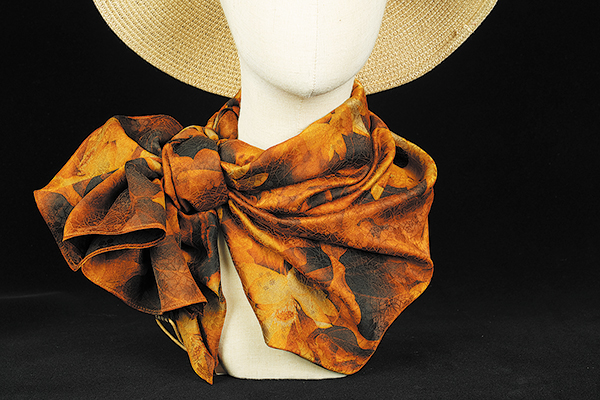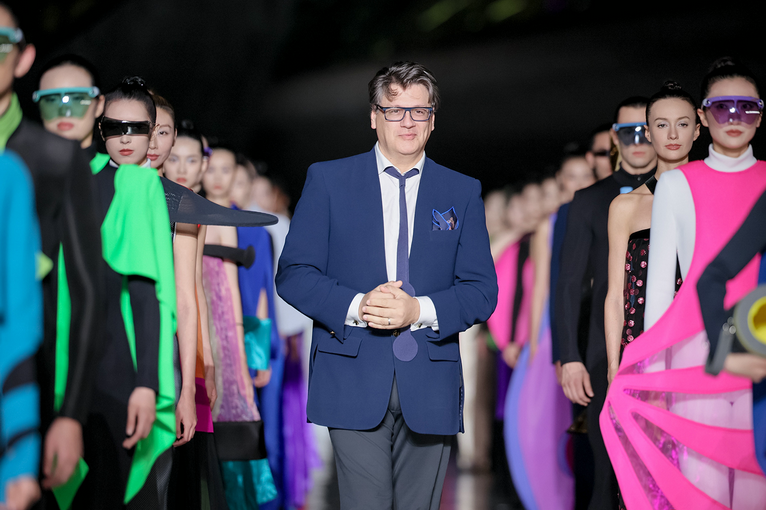The process of prestige
Guangdong gauze, once a luxury reserved for the wealthy, can take months to make due to its time-consuming production and the use of natural materials, Yang Feiyue reports.


Nature's gift
Under bright light, the black side of the fabric gives off a metallic luster while the reddish-brown side takes on a cracking pattern that changes with time.
"The craft of creating xiangyunsha relies on five indispensable natural elements: mulberry silk, natural dyestuff, river mud, grass fields and sunlight. Thus, it is often referred to as 'a gift from nature'," Ouyang explains.
Located in the center of the Pearl River Delta, Shunde is home to an intricate network of rivers, with fishponds scattered across the landscape. Ancient fishermen discovered that soaking their fishing nets in yam sap made them more durable and resilient.
An accidental discovery was made — when their clothes were stained with sap and river mud, they became cooler and more durable. This serendipitous find gradually evolved into a unique dyeing technique, which was ingeniously applied to silk.
Ouyang's interest in the fabric developed during her childhood, as her family cherished garments made from this material.
During the summer when air conditioning was rare, wearing xiangyunsha was incredibly comfortable, she recalls.
However, it wasn't until she worked as an accountant that she could afford the garments sold in shops.
"I was shocked when I saw the rich colors and styles of the garments on display," she says.
From that moment, her fascination with xiangyunsha deepened, and her frequent visits to the shops eventually led her to meet Liang Zhu, a shop owner and a national-level inheritor of xiangyunsha dyeing and finishing techniques.
Through their interactions, Ouyang realized that the sun-drying process is not only complex and labor-intensive, but also requires artisans to endure long hours of exposure to the sun.




































